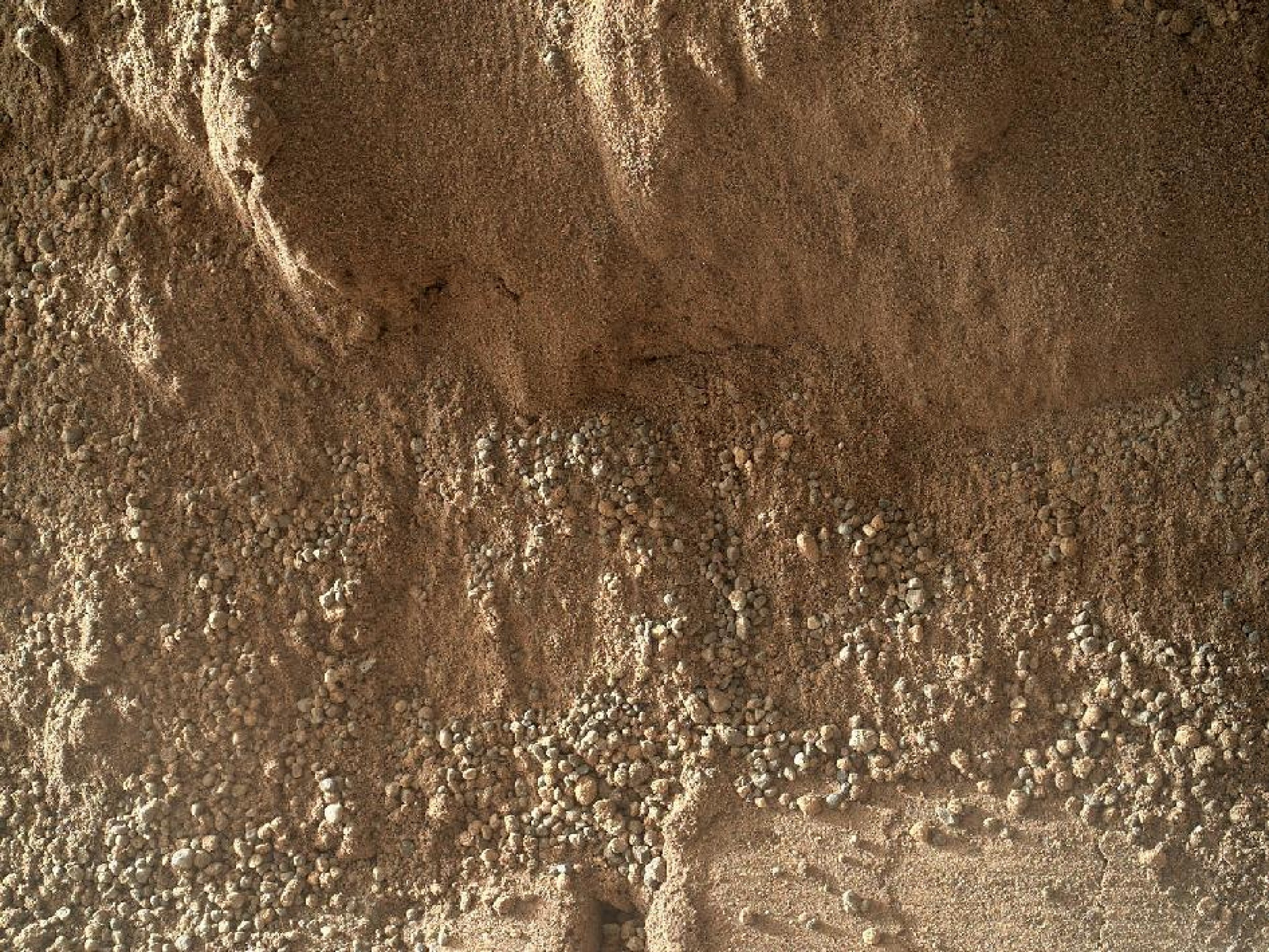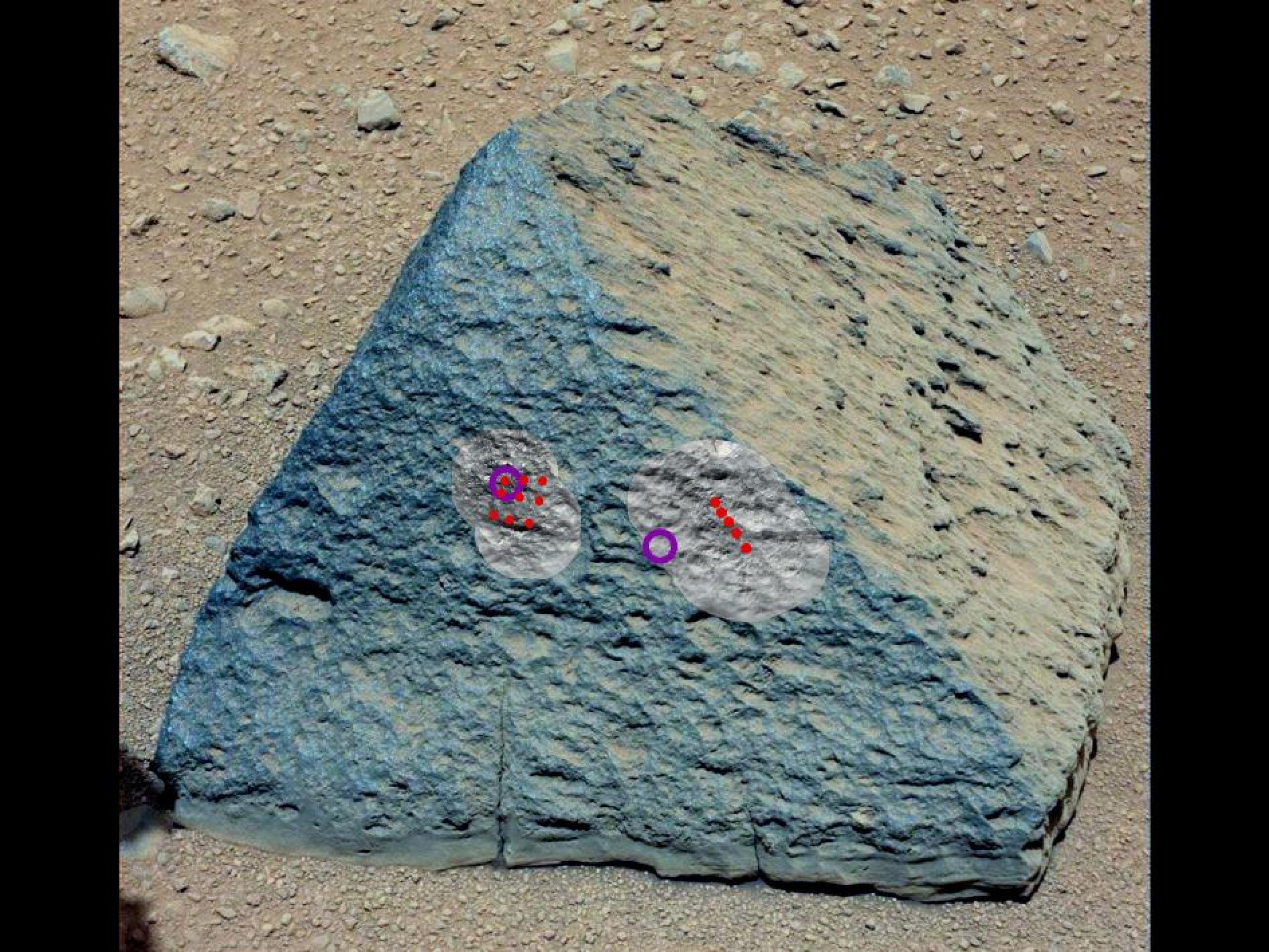Football-Sized Martian Rock Touched By NASA Curiosity Mars Rover Reveals Surprises [PHOTOS]
NASA’s Curiosity Mars rover has managed to reach out to the first Martian rock, and according to the space agency, it presents a more varied composition than expected from previous missions.
After studying the football-size rock, dubbed “Jake Matijevic,” scientists said that it resembled some unusual rocks from Earth's interior. The results of the study also support some surprising recent measurements.
"This rock is a close match in chemical composition to an unusual but well-known type of igneous rock found in many volcanic provinces on Earth," said Edward Stolper of the California Institute of Technology in Pasadena, Calif., who is a Curiosity co-investigator. "With only one Martian rock of this type, it is difficult to know whether the same processes were involved, but it is a reasonable place to start thinking about its origin."
According to scientists, rocks on Earth with composition like that of the Jake rock are created by processes in the planet's mantle beneath the crust, from crystallization of relatively water-rich magma at elevated pressure.
Jake was the first rock analyzed by the rover's arm-mounted Alpha Particle X-Ray Spectrometer (APXS) instrument and about the thirtieth rock examined by the Chemistry and Camera (ChemCam) instrument. It has two penny-sized spots that were analyzed on Sept. 22 by Curiosity’s improved and faster APXS devices.
"Jake is kind of an odd Martian rock," said APXS Principal Investigator Ralf Gellert of the University of Guelph in Ontario, Canada. "It's high in elements consistent with the mineral feldspar, and low in magnesium and iron."
ChemCam, on the other hand, found unique compositions at each of 14 target points on the rock, hitting different mineral grains within it.
"ChemCam had been seeing compositions suggestive of feldspar since August, and we're getting closer to confirming that now with APXS data, although there are additional tests to be done," said ChemCam Principal Investigator Roger Wiens of Los Alamos National Laboratory in New Mexico.
The wealth of information from the two instruments checking chemical elements in the same rock is just a preview, said NASA in a statement. Curiosity also carries analytical laboratories inside the rover to provide other composition information about powder samples from rocks and soil.
The mission is progressing toward getting the first soil sample into those analytical instruments during a "sol" or Martian day.


© Copyright IBTimes 2024. All rights reserved.












